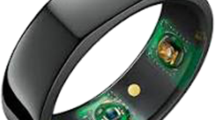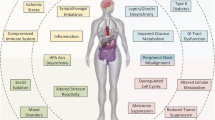Abstract
We investigated the effects of mobile phone (900 and 1800 MHz)- and Wi-Fi (2450 MHz)-induced electromagnetic radiation (EMR) exposure on uterine oxidative stress and plasma hormone levels in pregnant rats and their offspring. Thirty-two rats and their forty newborn offspring were divided into the following four groups according to the type of EMR exposure they were subjected to: the control, 900, 1800, and 2450 MHz groups. Each experimental group was exposed to EMR for 60 min/day during the pregnancy and growth periods. The pregnant rats were allowed to stand for four generations (total 52 weeks) before, plasma and uterine samples were obtained. During the 4th, 5th, and 6th weeks of the experiment, plasma and uterine samples were also obtained from the developing rats. Although uterine lipid peroxidation increased in the EMR groups, uterine glutathione peroxidase activity (4th and 5th weeks) and plasma prolactin levels (6th week) in developing rats decreased in these groups. In the maternal rats, the plasma prolactin, estrogen, and progesterone levels decreased in the EMR groups, while the plasma total oxidant status, and body temperatures increased. There were no changes in the levels of reduced glutathione, total antioxidants, or vitamins A, C, and E in the uterine and plasma samples of maternal rats. In conclusion, although EMR exposure decreased the prolactin, estrogen, and progesterone levels in the plasma of maternal rats and their offspring, EMR-induced oxidative stress in the uteri of maternal rats increased during the development of offspring. Mobile phone- and Wi-Fi-induced EMR may be one cause of increased oxidative uterine injury in growing rats and decreased hormone levels in maternal rats.
Graphical Abstract
TRPV1 cation channels are the possible molecular pathways responsible for changes in the hormone, oxidative stress, and body temperature levels in the uterus of maternal rats following a year-long exposure to electromagnetic radiation exposure from mobile phones and Wi-Fi devices. It is likely that TRPV1-mediated Ca2+ entry in the uterus of pregnant rats involves accumulation of oxidative stress and opening of mitochondrial membrane pores that consequently leads to mitochondrial dysfunction, substantial swelling of the mitochondria with rupture of the outer membrane and release of oxidants such as superoxide (O2 −) and hydrogen peroxide (H2O2). The superoxide radical is converted to H2O2 by superoxide dismutase (SOD) enzyme. Glutathione peroxidase (GSH-Px) is an important antioxidant enzyme for removing lipid hydroperoxides and hydrogen peroxide and it catalyzes the reduction of H2O2 to water.





Similar content being viewed by others
Abbreviations
- ELF:
-
Extremely low electrical field
- ELISA:
-
Enzyme-linked immunosorbent assay
- EMR:
-
Electromagnetic radiation
- FSH:
-
Follicle-stimulating hormone
- GSH:
-
Reduced glutathione
- GSH-Px:
-
Glutathione peroxidase
- LH:
-
Luteinizing hormone
- NADPH:
-
Nicotinamide adenine dinucleotide phosphate
- ROS:
-
Reactive oxygen species
- TAS:
-
Total antioxidant status
- TOS:
-
Total oxidant status
- WLAN:
-
Wireless local area network
References
M. Nazıroğlu, M. Yuksel, M.O. Özkaya, S.A. Köse, Effects of Wi-Fi and mobile phone on reproductive systems in female and male. J. Membr. Biol. 246, 869–875 (2013)
J.B. Burch, J.S. Reif, C.W. Noonan, T. Ichinose, A.M. Bachand, T.L. Koleber, M.G. Yost, Melatonin metabolite excretion among cellular telephone users. Int. J. Radiat. Biol. 78, 1029–1036 (2002)
E.S. Altpeter, M. Röösli, M. Battaglia, D. Pfluger, C.E. Minder, T. Abelin, Effect of short-wave (6-22 MHz) magnetic fields on sleep quality and melatonin cycle in humans: the Schwarzenburg shut-down study. Bioelectromagnetics. 27, 142–150 (2006)
International Commission on Non-Ionizing Radiation Protection (ICNIRP), SCI Review mobile phones, brain tumors and the interphone study: where are we now? Environ. Health Perspect. 119, 1534–1538 (2011)
R. de Seze, P. Fabbro-Peray, L. Miro, GSM radiocellular telephones do not disturb the secretion of antepituitary hormones in humans. Bioelectromagnetics 19, 271–278 (1998)
Y. Djeridane, Y. Touitou, R. de Seze, Influence of electromagnetic fields emitted by GSM-900 cellular telephones on the circadian patterns of gonadal, adrenal and pituitary hormones in men. Radiat. Res. 169, 337–343 (2008)
M. Woldanska-Okonska, M. Karasek, J. Czernicki, The influence of chronic exposure to low frequency pulsating magnetic fields on concentrations of FSH, LH, prolactin, testosterone and estradiol in men with back pain. Neuroendocrinol. Lett. 25, 201–206 (2004)
B. Çiğ, M. Nazıroğlu, Investigation of the effects of distance from sources on apoptosis, oxidative stress and cytosolic calcium accumulation via TRPV1 channels induced by mobile phones and Wi-Fi in breast cancer cells. Biochim. Biophys. Acta 1848, 2756–2765 (2015)
F. Poulletier de Gannes, B. Billaudel, E. Haro et al., Rat fertility and embryo fetal development: influence of exposure to the Wi-Fi signal. Reprod. Toxicol. 36C, 1–5 (2012)
G. Kismali, E. Ozgur, G. Guler, A. Akcay, T. Sel, N. Seyhan, The influence of 1800 MHz GSM-like signals on blood chemistry and oxidative stress in non-pregnant and pregnant rabbits. Int. J. Rad. Biol. 88, 414–419 (2012)
A.M. Sommer, K. Grote, T. Reinhardt, J. Streckert, V. Hansen, A. Lerchl, Effects of radiofrequency electromagnetic fields (UMTS) on reproduction and development of mice: a multi-generation study. Radiat. Res. 171, 89–95 (2009)
M.A. Al-Akhras, A. Elbetieha, M.K. Hasan, I. Al-Omari, H. Darmani, B. Albiss, Effects of low-frequency magnetic field on fertility of adult male and female rats. Bioelectromagnetics 22, 340–344 (2001)
J. Kliukiene, T. Tynes, A. Andersen, Residential and occupational exposures to 50-Hz magnetic fields and breast cancer in women: a population-based study. Am. J. Epidemiol. 159, 852–861 (2004)
A. Özorak, M. Nazıroğlu, Ö. Çelik, M. Yüksel, D. Özçelik, M.O. Özkaya, H. Çetin, M.C. Kahya, S.A. Kose, Wi-Fi (2.45 GHz) and mobile phone (900 and 1800 MHz)-induced risks on oxidative stress and elements in kidney and testis of rats during pregnancy and the development of newborns. Biol. Trace Elem. Res. 156(1-3), 221–229 (2013)
Y. Türker, M. Nazıroğlu, N. Gümral et al., Selenium and L-carnitine reduce oxidative stress in the heart of rat induced by 2.45-GHz radiation from wireless devices. Biol. Trace Elem. Res. 143, 1640–1650 (2011)
Z. Jin, C. Zong, B. Jiang, Z. Zhou, J. Tong, Y. Cao, The effect of combined exposure of 900 MHz radiofrequency fields and doxorubicin in HL-60 cells. PLoS ONE 7(9), e46102 (2012)
A. Peyman, A. Rezazadeh, C. Gabriel, Changes in the dielectric properties of rat tissue as a function of age at microwave frequencies. Physics Med. Biol. 46, 1617–1629 (2001)
Z.A. Placer, L. Cushman, B.C. Johnson, Estimation of products of lipid peroxidation (malonyl dialdehyde) in biological fluids. Anal. Biochem. 16, 359–364 (1966)
O.H. Lowry, N.J. Rosenbrough, A.L. Farr, R.J. Randall, Protein measurement with the Folin phenol reagent. J. Biol. Chem. 193, 265–275 (1951)
J. Sedlak, R.H.C. Lindsay, Estimation of total, protein bound and non-protein sulfhydryl groups in tissue with Ellmann’s reagent. Anal. Biochem. 25, 192–205 (1968)
R.A. Lawrence, R.F. Burk, Glutathione peroxidase activity in selenium-deficient rat liver. Biochem. Biophys. Res. Commun. 71, 952–958 (1976)
I.D. Desai, Vitamin E analysis methods for animal tissues. Methods Enzymol. 105, 138–147 (1984)
J. Suzuki, N. Katoh, A simple and cheap method for measuring vitamin A in cattle using only a spectrophotometer. Jpn. J. Vet. Sci. 52, 1282–1284 (1990)
S.K. Jagota, H.M. Dani, A new colorimetric technique for the estimation of vitamin C using Folin phenol reagent. Anal. Biochem. 127, 178–182 (1982)
O. Erel, A novel automated direct measurement method for total antioxidant capacity using a new generation, more stable ABTS radical cation. Clin. Biochem. 37, 277–285 (2004)
S. Seité, E. Popovic, M.P. Verdier, R. Roguet, P. Portes, C. Cohen, A. Fourtanier, J.B. Galey, Iron chelation can modulate UVA-induced lipid peroxidation and ferritin expression in human reconstructed epidermis. Photodermatol. Photoimmunol. Photomed. 20, 47–52 (2004)
M.Y. Obolenskaya, N.M. Teplyuk, R.L. Divi, M.C. Poirier, N.B. Filimonova, M. Zadrozna, M.J. Pasanen, Human placental glutathione S-transferase activity and polycyclic aromatic hydrocarbon DNA adducts as biomarkers for environmental oxidative stress in placentas from pregnant women living in radioactivity- and chemically-polluted regions. Toxicol. Lett. 196(2), 80–86 (2010)
M. Nazıroğlu, Role of selenium on calcium signaling and oxidative stress- induced molecular pathways in epilepsy. Neurochem. Res. 34, 2181–2191 (2009)
M.E. Anderson, Glutathione: an overview of biosynthesis and modulation. Chem. Biol. Interact. 111–112, 1–14 (1998)
I. Belyaev, Non-thermal biological effects of microwaves. Microw. Rev. 11, 13–29 (2005)
J.M. Lary, D.L. Conover, P.H. Johnson, R.W. Hornung, Dose-response relationship body temperature and birth defects in radiofrequency-irradiation rats. Bioelectromagnetics 7, 141–149 (1986)
R.T. Wangemann, S.F. Cleary, The in vivo effects of 2.45 GHz microwave radiation on rabbit serum components and sleeping environmental times. Radiat. Environ. Biophys. 13, 89–103 (1976)
A. Tomruk, G. Guler, A.S. Dincel, The Influence of 1800 MHz GSM-like signals on hepatic oxidative DNA and lipid damage in nonpregnant, pregnant, and newly born rabbits. Cell Biochem. Biophys. 56, 39–47 (2010)
H. Çetin, M. Nazıroğlu, Ö. Çelik, M. Yüksel, N. Pastacı, M.O. Özkaya, Liver antioxidant stores protect the brain from electromagnetic radiation (900 and 1800 MHz)-induced oxidative stress in rats during pregnancy and the development of offspring. J. Matern. Fetal. Neonatal. Med. 27, 1915–1921 (2014)
M. Ozguner, A. Koyu, G. Cesur, M. Ural, F. Ozguner, A. Gokcimen, N. Delibas, Biological and morphological effects on the reproductive organ of rats after exposure to electromagnetic field. Saudi Med. J. 26(3), 405–410 (2005)
M.A. Al-Akhras, Influence of 50 Hz magnetic field on sex hormones and body, uterine, and ovarian weights of adult female rats. Electromagn. Biol. Med. 27, 155–163 (2008)
M. Woldanska-Okonska, M. Karasek, J. Czernicki, The influence of chronic exposure to low frequency pulsating magnetic fields on concentrations of FSH, LH, prolactin, testosterone and estradiol in men with back pain. Neuro Endocrinol. Lett. 25, 201–216 (2004)
Y. Kurokawa, H. Nitta, H. Imai, M. Kabuto, Acute exposure to 50 Hz magnetic fields with harmonic and transient components: lack of effects on nighttime hormonal secretion in men. Bioelectromagnetics 24, 12–20 (2003)
M. Karasek, A. Lerchl, Melatonin and magnetic fields. Neuroendocrinol. Lett. 23(Suppl. 1), 84–87 (2002)
J.S. Schiffman, H.M. Lasch, M.D. Rollag, A.E. Flanders, G.C. Brainard, D.L. Burk, Effect of magnetic resonance imaging on the normal human pineal body: measurements of plasma melatonin levels. J. Magn. Reson. Imaging 4, 7–11 (1994)
G. Yin, T. Zhu, J. Li, M. Chen, S. Yang, X. Zhao, Decreased expression of survivin, estrogen and progesterone receptors in endometrial tissues after radiofrequency treatment of dysfunctional uterine bleeding. World J. Surg. Oncol. 10, 100 (2012)
Y. Djeridane, Y. Touitou, R. de Seze, Influence of electromagnetic fields emitted by GSM-900 cellular telephones on the circadian patterns of gonadal, adrenal and pituitary hormones in men. Radiat. Res. 169, 337–343 (2008)
Y. Shi, X. Bao, X. Huo, Z. Shen, T. Song, 50-Hz magnetic field (0.1-mT) alters c-fos mRNA expression of early post implantation mouse embryos and serum estradiol levels of gravid mice. Birth Defects Res. B Dev. Reprod. Toxicol. 74, 196–200 (2005)
S. Shahin, V.P. Singh, R.K. Shukla, A. Dhawan, R.K. Gangwar, S.P. Singh, C.M. Chaturvedi, 2.45 GHz microwave irradiation-induced oxidative stress affects implantation or pregnancy in mice, Mus musculus. Appl. Biochem. Biotechnol. 169, 1727–1751 (2013)
Acknowledgments
The Scientific Research Unit (BAP) of the Suleyman Demirel University (Project Number: 3536-TU2-13) supported this study. The authors are grateful to Muhammet Şahin (Department of Biophysics) for helping with the antioxidant and oxidant analyses. In addition, the authors wish to thank Assoc. Prof. Dr. Selçuk Çömlekçi (Electronics and Communication Engineering, Suleyman Demirel University, Isparta, Turkey), for calculation of the specific absorption rates.
Author contribution
Mustafa Nazıroğlu formulated the hypothesis for the present study and wrote the report. Murat Yüksel was involved in facilitating the EMR exposure procedures as well as in managing the experimental rats. Mehmet Okan Özkaya made critical revisions to the manuscript.
Author information
Authors and Affiliations
Corresponding author
Ethics declarations
Conflict of Interest
The authors declare no conflicts of interest.
Rights and permissions
About this article
Cite this article
Yüksel, M., Nazıroğlu, M. & Özkaya, M.O. Long-term exposure to electromagnetic radiation from mobile phones and Wi-Fi devices decreases plasma prolactin, progesterone, and estrogen levels but increases uterine oxidative stress in pregnant rats and their offspring. Endocrine 52, 352–362 (2016). https://doi.org/10.1007/s12020-015-0795-3
Received:
Accepted:
Published:
Issue Date:
DOI: https://doi.org/10.1007/s12020-015-0795-3




